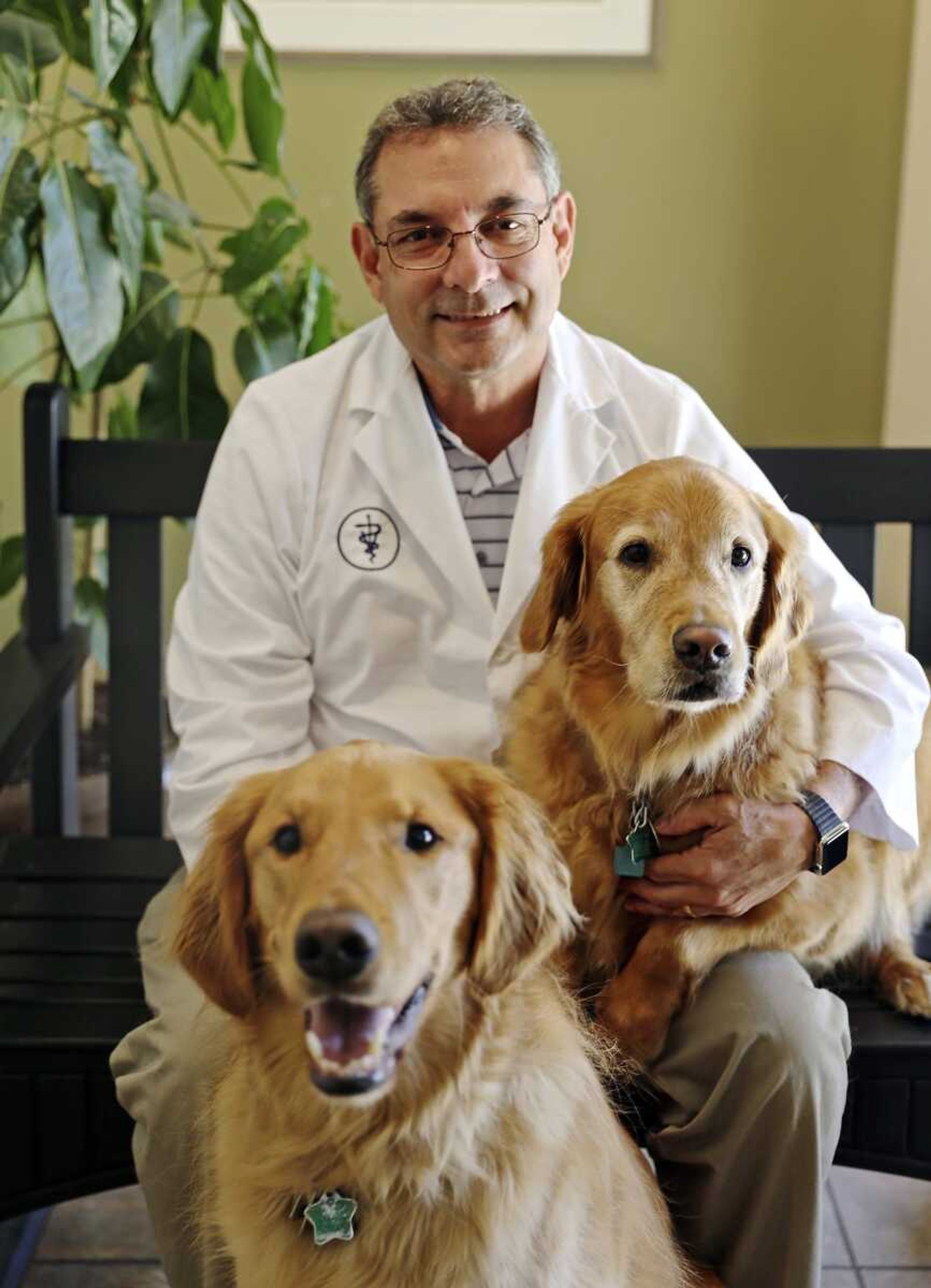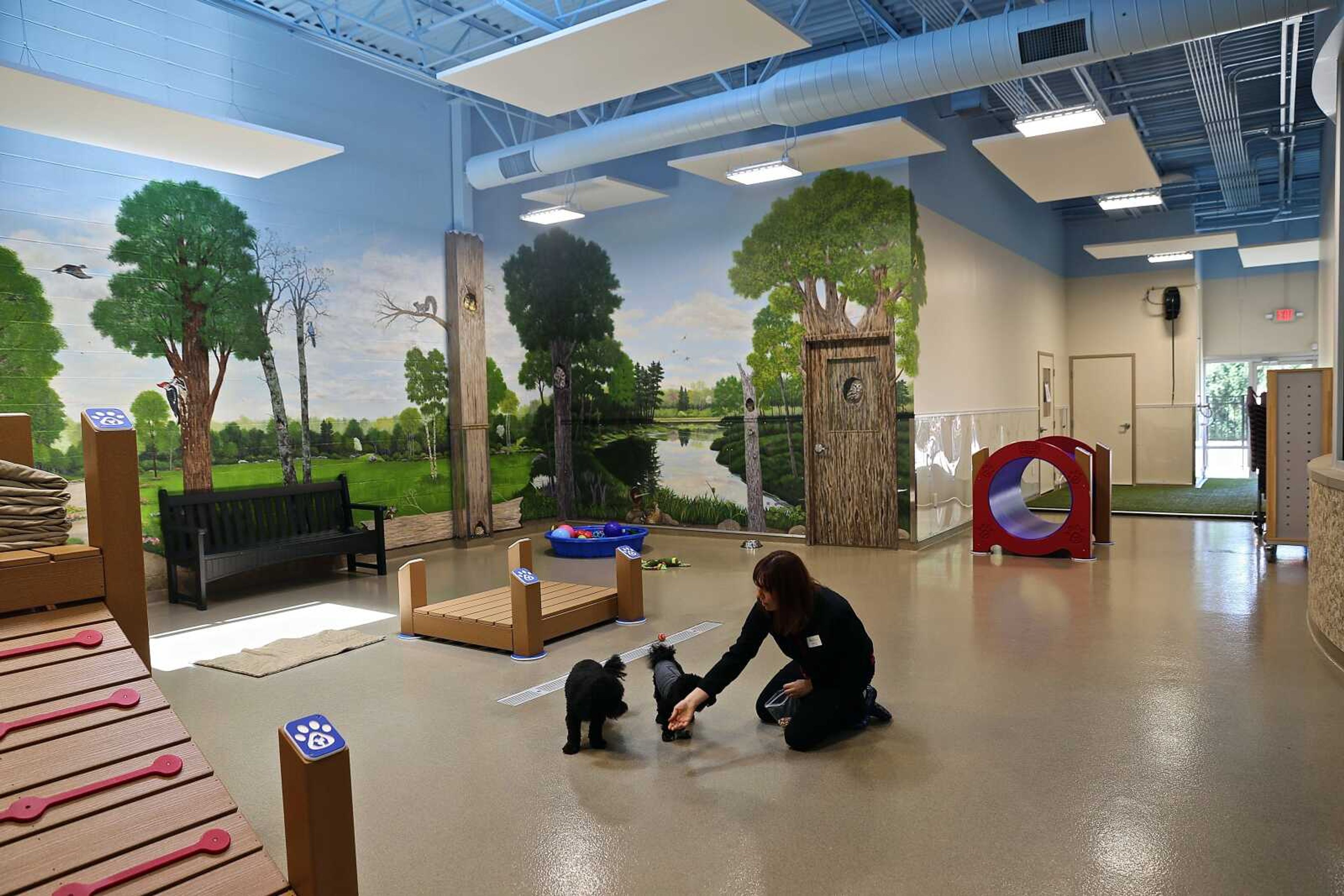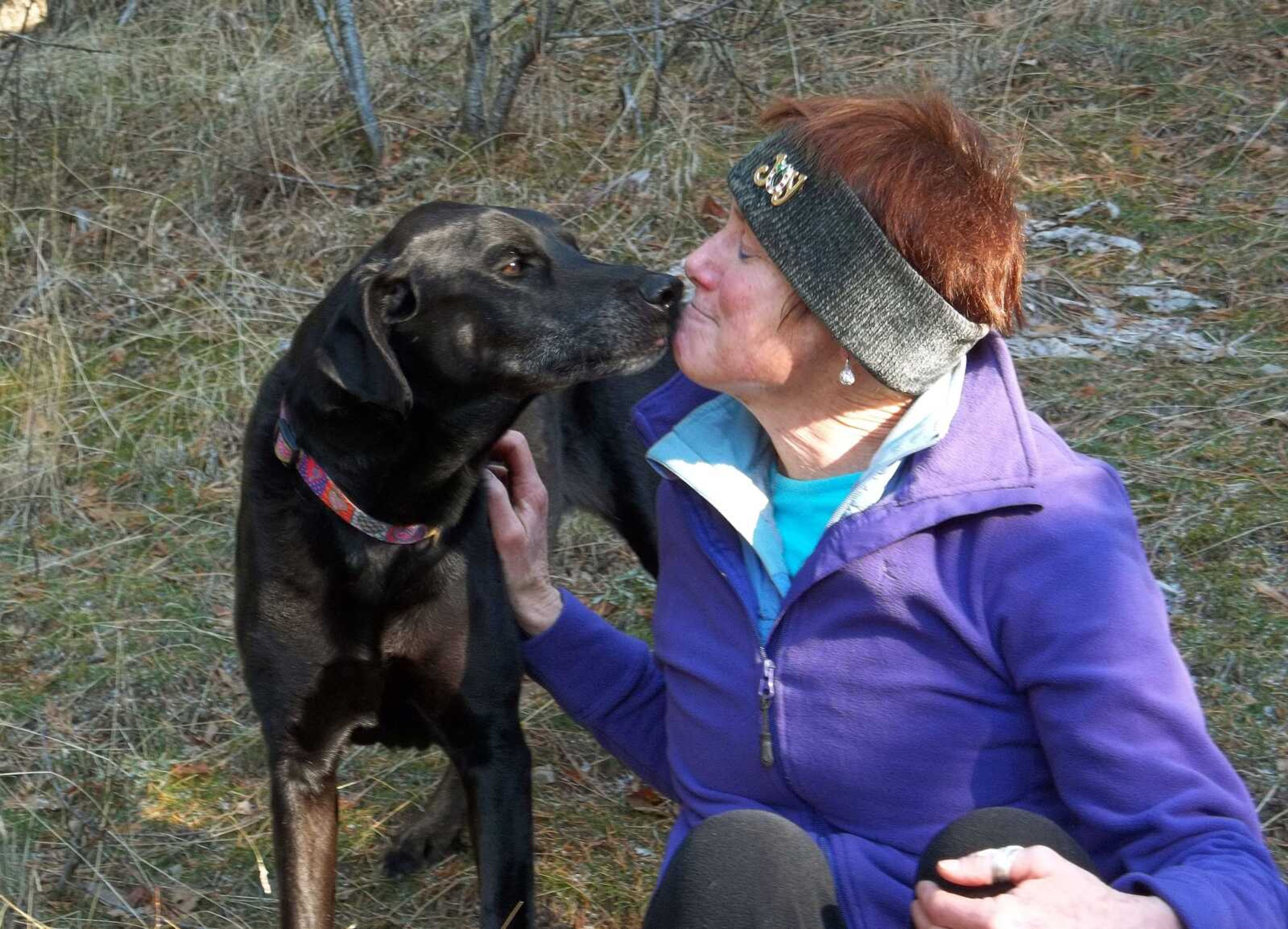No more fear: 'Fear-free' veterinarians aim to reduce stress for pets
LOS ANGELES -- Trips to the veterinarian leave Joy so scared, she gets sick. The black Lab-mix dog shakes and shivers, her heart rate jumps, her blood pressure spikes, her temperature rises, her eyes dilate and she cowers under anything she can get beneath...
LOS ANGELES -- Trips to the veterinarian leave Joy so scared, she gets sick.
The black Lab-mix dog shakes and shivers, her heart rate jumps, her blood pressure spikes, her temperature rises, her eyes dilate and she cowers under anything she can get beneath.
After trying vet after vet for 14 years, the dog's owner, Debby Trinen of Sandpoint, Idaho, has finally found relief for Joy's stress from a new approach to veterinary care called "fear-free."
The fear-free movement aims to eliminate things in the vet's office that bother dogs and cats -- such as white lab coats, harsh lights and slippery, cold exam tables -- while adding things they do like.
For example, a fear-free clinic "will have a big treat budget," says Dr. Marty Becker, the initiative's main cheerleader and the vet chosen to introduce it to the country. All the dogs and cats at his North Idaho Animal Hospital, where Joy now gets care, have space on their files to note favorite treats, from Easy Cheese to hot dogs.

About 50 practices across the country have gone fear-free, Becker says. Later this year, the initiative will start certifying veterinary professionals. The certification takes about 12 hours of online instruction. The movement hopes to register as many as 5,000 people this year.
Hospital certification could start in 2018, followed by animal shelters and homes, Becker says.
Heather Lewis of Animal Arts in Boulder, Colorado, which has been designing animal hospitals since 1979, says there are many ways to make veterinary offices more pleasant for pets. Among them:
-- Paint walls in pastels and have staff wear pastel scrubs and lab coats. To an animal's eyes, a white lab coat is like a bright glowing beacon and can be scary.
-- Remove old fluorescent lights. Dogs and cats have better hearing than humans, and the buzz from those old fixtures can bother them.
-- Consider alternatives to lifting animals up on to high exam tables with cold, slippery metal surfaces. Some clinics, like Becker's, use yoga mats for animal exams.
-- For background music, choose classical. Becker and Lewis like collections called "Through a Dog's Ear" and "Through a Cat's Ear."
A fear-free vet might also use sedatives or pheromones -- chemicals secreted by animals that serve as stimulants for many things, including mating -- rather than muzzles or restraints to keep animals calm during treatment, Becker says.
"Twenty-five to 30 percent of pets need sedation," Becker says.
Becker introduced veterinarians to the fear-free initiative at the North American Veterinary Community convention last year. He presented version 2.0 at the 2016 conference held recently in Florida.

Becker, chief veterinary correspondent for the American Humane Association, has written 22 books and is doing a 23rd on the fear-free initiative.
One fear-free center is the Bigger Road Veterinary Center in Springboro, Ohio.
"We designed this clinic to look like you were going for walks in the park," says Dr. John Talmadge. "Support beams look like maple trees. I don't know if we're fooling any pets, but the exam rooms look like cottages and it looks like blue sky on the ceiling. It has a very inviting feel."
He also expanded from 2,000 square feet to 10,000 square feet so he'd have room for better senior care and pain management. And for owners making end-of-life decisions for their pets, the clinic offers a private area.
"There is nothing more important than making that last treatment dignified and calming," Talmadge says.

Becker says the fear-free initiative is important because stress and anxiety cause so many problems for pets, both physical and mental.
"Once pets know fear and anxiety and stress, you can't undo it," he says, adding, "You can see it. You can smell it because dogs are stained with their own saliva from licking themselves. You can hear it and feel it."
Stress and fear can lead animals to hide the symptoms that prompted the vet visit, and may even alter their test results, says Richard A. LeCouteur, a veterinarian with a specialty in neurology and a professor emeritus at the University of California at Davis' School of Veterinary Medicine.
Talmadge says the fear-free approach is proving popular.
"We have more than doubled our business through that clinic since opening (in April) and are well ahead of where we thought we would be," he says.
Connect with the Southeast Missourian Newsroom:
For corrections to this story or other insights for the editor, click here. To submit a letter to the editor, click here. To learn about the Southeast Missourian’s AI Policy, click here.









